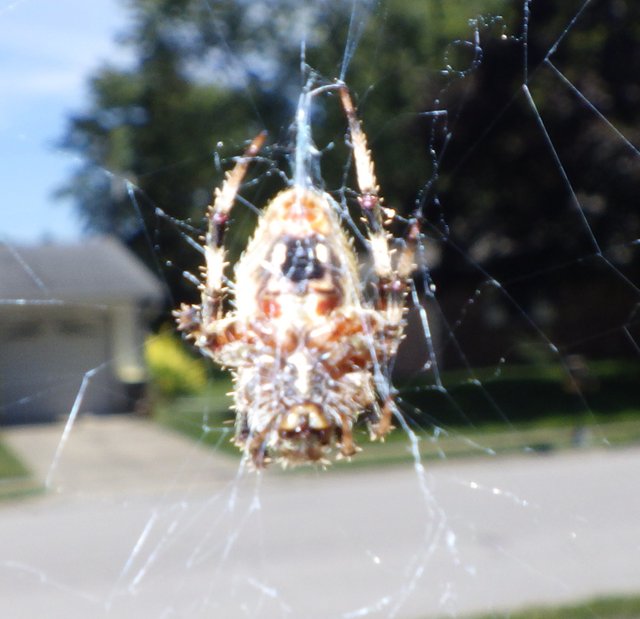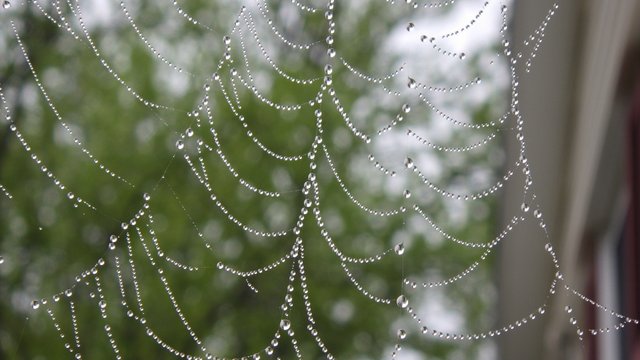The simple and succinct answer to this question is provided by Brent D. Opell (2021):
Many araneoid orb weaving spiders construct a new web each day. Before doing so, they take down and ingest their existing web (Carico 1986), allowing them to recycle some of the web's low molecular mass compounds and proteins in the next web they construct (Townley & Tillinghast 1988). This adds to the economy of web production and ensures that components, such as choline, which is important for glue droplet hygroscopicity and cannot be synthesized by a spider, are not lost (Townley et al. 2006; Townley & Tillinghast 2013; Jain et al. 2018).
Salts of choline, especially choline chloride are notoriously hygroscopic, meaning that they tend to absorb moisture from the air.

The water-soaked web shown above was produced by this orb spider. We named this orb spider 'Roy' after 'Roy Orbison' of 'Pretty Woman' fame.
Photographs were taken with a RICOH WG-50 camera.
References:
Carico, J.E. (1986) Web removal patterns in orb-weaving spiders. Pp. 306–318. In Spiders: Webs, Behavior, and Evolution (W.A. Shear, ed.). Stanford University Press, Stanford.
Opell, B.D. (2021) Water harvesting during orb web recycling. Journal of Arachnology, 48: 278-283.
Townley, M.A. Tillinghast, E.K. (2013) Aggregate silk gland secretions of araneoid spiders. Pp. 283–302. In Spider Ecophysiology (W. Nentwig, ed.). Springer-Verlag, New York.
